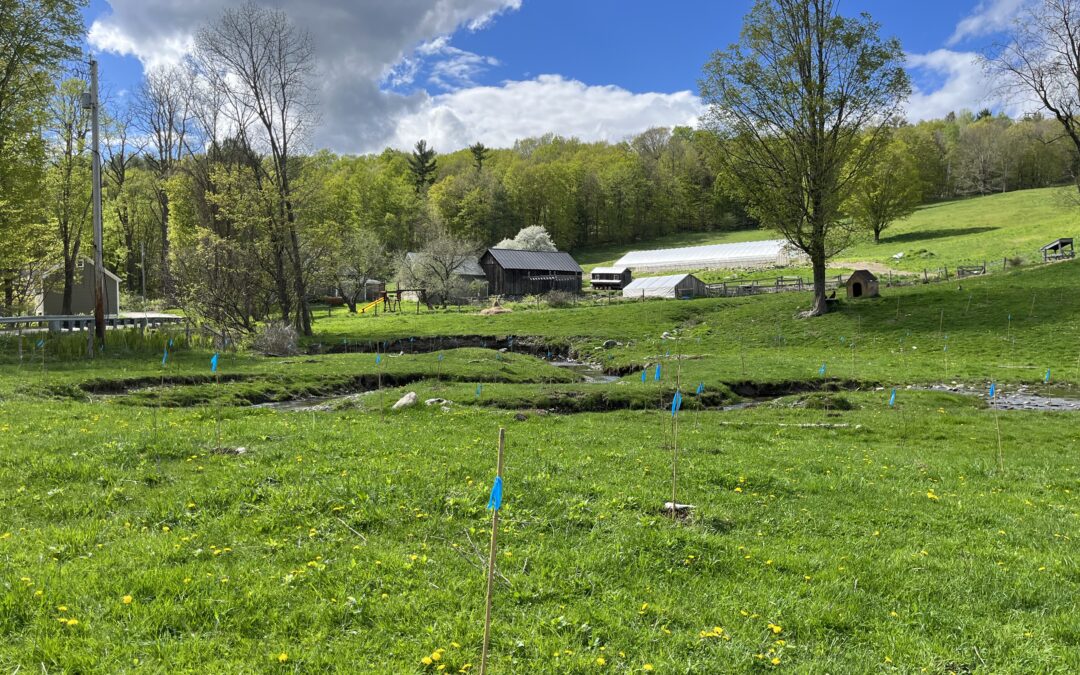“We are really looking forward to recreating natural woodland areas throughout the farm that attract wildlife, birds, and are filled with native trees and shrubs.” Janis Reinke of Frog Hollow Farmstead shared, “Many of our neighbors have also stopped to share their excitement for the project and are anxious to see the changing landscape.”
Janis and Jason Reinke operate a small, diversified farm in Castleton located along Sucker Brook, within the Castleton RIver Watershed. Past water quality monitoring data through the DEC LaRosa Monitoring Program has shown this section of Sucker Brook as having elevated nutrient levels. In addition to the known water quality concerns in the watershed, the parcel, which is now the Frog Hollow Farmstead, was identified as a project location in the 2016 Storm Water Master Plan (SWMP) conducted by the Poultney Mettowee Natural Resources Conservation District (PMNRCD). This area of the watershed has long been a focus for the PMNRCD, so when staff with the Conservation Reserve Enhancement Program (CREP) and United States Fish and Wildlife Service (USFWS) reached out about partnering on this project, the District was more than happy to collaborate.
The 2024 project included a 3.88 acre planted buffer, invasive plant removal, exclusion fencing along Sucker Brook and a small tributary, and three designated stream crossings for animals. In May 2024, District staff, through the Champlain Valley Native Plant Restoration Nursery, and local volunteers planted the area, converting former low-quality pasture into a diverse forested buffer.
The new buffer, planted with 1,360 native tree and shrub species such as willows, dogwoods, viburnums, and evergreens, will have many positive impacts and help to address several issues the farm and this watershed are experiencing. The goals of this project include reducing nutrient runoff, managing the active erosion occurring on the stream banks, shading the water to promote fish habitat, and allowing the brook access to a functioning vegetated floodplain.
The success of projects like these requires coordination and collaboration between partners, while keeping the farmer and their goals for the land at the forefront of the work. “The Poultney Mettowee Natural Resources Conservation District was a valuable partner on the project. They sourced high quality plant material and, as always, took great care with handling and planting the trees and shrubs” shared Ben Gabos with CREP, “The District staff also creatively worked around farm logistic issues that delayed planting in some project areas and communicated effectively with CREP staff and farm owners to complete the planting without compromising the health of the plant material and success of the project.”
Funding for the project was provided by Vermont’s Conservation Reserve Enhancement Program, United States Fish and Wildlife Service, and Pur Projet.
Story contributed by Sadie Brown, Poultney Mettowee NRCD
Photo: Native plantings installed at Frog Hollow Farm. Photo by Poultney Mettowee NRCD.







